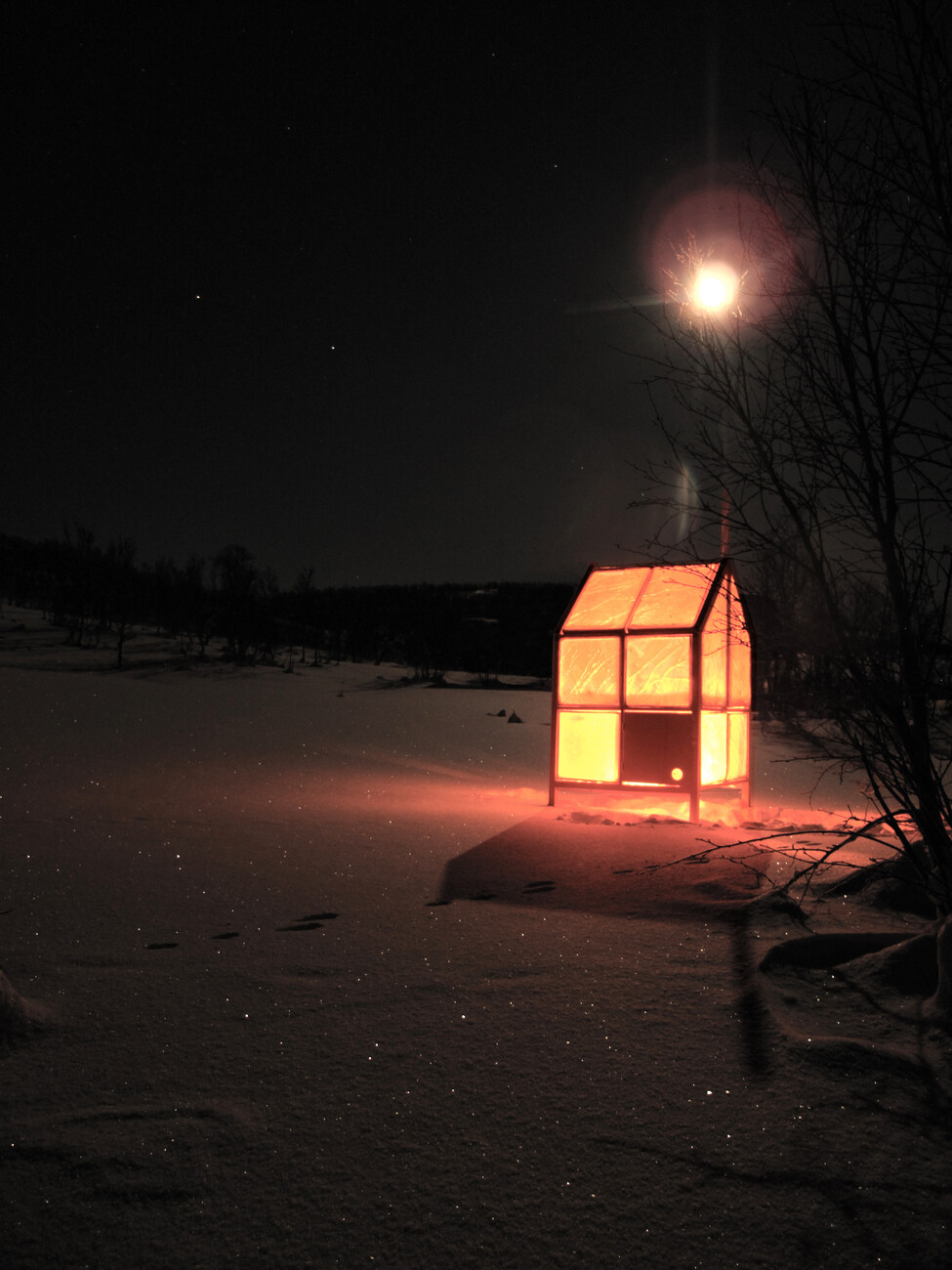Hardy Houses 10
Ice fishing deluxe
A good ice fisherman is certainly a hardy type. After all, anyone who sits for hour after hour at the edge of a hole they have themselves cut in a thick slab of ice waiting for fish will soon feel the chill of the icy wind under their clothes. For this reason, many fans of this sport use windbreaks or tents to protect themselves from the cold gusts.
The small “Unavailability” pavilion conceived by the Norwegian architects at Gartnerfuglen is also designed as a windbreak for ice fishing. Its construction, however, is fundamentally different to that of conventional products. Indeed, it consists of a simple lightweight, folding timber-frame system covered with wire mesh. When the mesh is sprinkled with water from the river or lake, it freezes into thin walls of ice when outside temperatures are low enough. E voilà – a windbreak!
The icy concept is already well-known, for example, from the “Pavilion for Vodka Ceremonies” built by Russian architect Alexander Brodsky in 2004 for just one winter as a temporary vodka bar on the Klyazminskoye Reservoir north of Moscow. Both projects comprise a minimal cold chamber that works with the materials immediately available and looks good to boot, for light shines through the ice into the interior. The last or first rays of sunlight immerse the tiny space in wonderfully warm tones, even if it is of course still freezing cold. Vice versa too, just a single candle makes the miniature building glow like a lantern – although it mustn’t get too warm inside lest the walls melt. Thus at the same time the Norwegian project aims to strike a balance, to find protection in nature while still maintaining a largely “authentic” ice-fishing experience.
The three studio partners Astrid Rohde Wang, Ole Larsen and Olav Arneberg were so pleased with their prototype that they thought it should be put to other uses too. So they took it with them on a skiing trip as a type of basic mobile home and came up with the idea that it could also be used in summer, with climbers maybe climbing up the wire mesh and forming summery green walls. The problem is, the plants needs too long to form walls. Consequently, its use in snow and ice has remained the only application to date.





